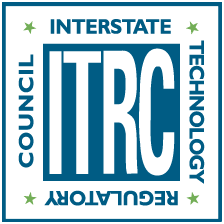Sustainable and Resilient Remediation
Regulations / Statute
State Rules and Regulations. In 2018, the Department of State launched the Rhode Island Code of Regulations, an online, uniform code of all proposed and final regulations filed by state agencies, boards and commissions under the state’s Administrative Procedures Act. It represents a comprehensive effort to make government – and government processes – more transparent, accessible, and efficient.
https://rules.sos.ri.gov/regulations/part/250-140-30-1
http://www.dem.ri.gov/pubs/regs/regs/waste/remreg11.pdf
Website
The goal of the program is to provide fair, comprehensive and consistent regulation of the investigation and remediation of hazardous waste, hazardous material and petroleum releases, implemented in a timely and cost-effective manner. The State program is designed to determine if a site poses a threat to human health and the environment and efficiently determine a remedy that is effective but not overly burdensome to the parties involved. This program also supports the redevelopment and reuse of contaminated sites through the Brownfields program. Sites are identified, evaluated, cleaned up and brought back to beneficial reuse in Rhode Island communities.
http://www.dem.ri.gov/programs/wastemanagement/site-remediation/
Climate
Executive Order
Executive Order 19-06 Heating sector transformation to ensure reliability and reduce emissions to protect against climate change.
http://climatechange.ri.gov/resiliency/
https://governor.ri.gov/sites/g/files/xkgbur236/files/2021-06/Executive%20Order%2019-06.pdf
Report
Rhode Island’s first comprehensive climate preparedness strategy report. Includeds actions that can be taken to protect infrastructure and natural resources, strengthen the economy, preserve the health of the environment, strengthening stakeholder collaborations, and keep Rhode Islanders safe.
http://climatechange.ri.gov/resiliency/
http://climatechange.ri.gov/documents/resilientrhody18.pdf
Wildfire
Website
State of Rhode Island wildfire webpage
https://riema.ri.gov/planning-mitigation/hazard-mitigation/threats-hazards/wildfires


